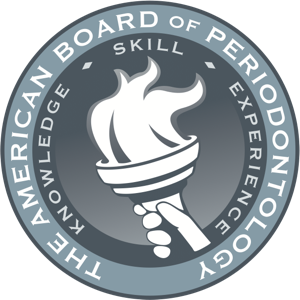Treatment For Gum Disease: What Needs to Be Done

About 47.2% of adults have some form of gum disease. Plaque and tartar build-up on your teeth activate harmful bacteria that attack your gums, causing gum disease.
If you fail to get early treatment, it can lead to tooth loss, heart disease, diabetes, and more. Your dentist will assess your gums to know the type of gum disease you have before prescribing treatment. Below is a guide to help you know the right gum disease treatment for you.
Types of Gum Disease
To determine how to treat gum disease, your dentist must first examine your gums and identify the type. Some common types of gum problems include:
Gingivitis
As the mildest form of gum disease, gingivitis results in the inflammation of the gingiva— the area of the gum that directly surrounds your teeth. It’s caused by the build-up of plaque and tartar, and the symptoms may be bearable and temporary if you improve your oral care routine.
Gingivitis can precede periodontitis but doesn’t essentially lead to it.
Periodontitis
Periodontitis is a more severe form of gum disease. It damages the soft tissue around your teeth and wears away the bone supporting them. Delaying gum disease treatment may severely ruin the supporting bone, loosening your teeth.
You may need extensive surgical treatments if you have advanced stages of periodontitis.
Symptoms of Periodontal Disease
You can find and treat your gum problem before it gets serious if you know what to look for. Below are some signs of gum disease to look out for:
Bleeding Gums
Bleeding gums is an early sign that you may have gum disease. As plaque accumulates and forms pockets between your teeth and gums, it causes your gums to turn red and swell. This leads to bleeding when you floss or brush.
Receding Gums
Apart from aging, receding gums can be an indicator that you have periodontal disease. As your infection worsens, your gums will recede away, leaving your teeth more exposed. Your exposed roots are more susceptible to tooth decay.
If you don’t take care of the gum problem soon enough, the condition may progress into the deeper layers of your gum and affect the underlying bone.
Bad Breath
When bacteria build up in your gums, they can produce gases that cause an odor. But bad breath can be an indicator of other dental problems like tooth cavities. Going to the dentist for a checkup will help you discover the reason for the odor.
Heat or Cold Sensitivity
Are your teeth sensitive to hot and cold foods and beverages? You may have gum disease.
As your gum tissue recedes, it exposes nerves that can be very sensitive to change in temperature. This is why you’ll experience some discomfort when you eat or drink something hot or cold.
Tender Gums
Tender gums aren’t normal! They may be a sign of undiagnosed gingivitis. Plaque and tartar build-up tend to irritate the gum tissue, leading to inflammation. If you have a localized area of gum tenderness and swelling, you may have a gum abscess.
Wiggly or Shifting Teeth
Does your teeth arrangement look a little different lately? Gum disease can attack the bones that hold your teeth, causing them to loosen and even move. It can also affect the way your teeth fit together when you bite. Seeking early gum disease treatment can prevent tooth loss.
Non-Surgical Treatment for Gum Disease
Gums are quite sensitive, meaning that periodontal health should be achieved in the least invasive way possible. This is can be done through non-surgical gum treatments like:
Scaling
It involves the removal of plaque and tartar above and below the gum line. Your dentist ensures to deep clean way down to the bottom of the gum pocket.
Root Planing
After scaling, your dentist will begin root planing. It requires smoothing out the root surfaces to help your gums reattach to your teeth.
Antibiotics
Taking antibiotics can help control bacterial infection. Antibiotic mouth wash or insertion of antibiotic gels can offer a deep clean to prevent plaque build-up. You can also use oral antibiotics to eliminate the infection-causing bacteria.
Surgical Treatment for Gum Disease
When non-surgical periodontal treatment doesn’t achieve periodontal health, surgery may be recommended. Effective surgical gum treatments include:
Laser Gum Therapy
Using laser technology, your dentist accesses and removes the inflamed gum tissue from around your tooth’s root. They can also remove the plaque and tartar build-up below and around your gum line. After the removal, they’ll smooth out any rough spots to reduce the chances of attracting bacteria.
Flap Surgery
This involves your periodontist making small incisions in your gum, lifting a section of your gum tissue to expose the roots for more effective scaling and root planing. After scaling and root planing, your gum tissue is sewed back in place.
Soft Tissue Grafts
When your gum recedes, you may need to reinforce the damaged soft tissue. Your periodontist removes a small amount of tissue from the roof of your mouth and attaches it to your receding gum line. It covers your roots, protecting them from cavities.
Bone Grafting
If the bone surrounding your tooth root is destroyed due to gum disease, your dentist can use fragments of your own bone or donated bone to restore your bone. The bone graft holds your teeth in place, preventing teeth loss. It can also lead to the regrowth of natural bone.
Guided Tissue Regeneration
Here, your periodontist fits a special piece of biocompatible fabric between your tooth and existing bone to allow the regrowth of bone destroyed by gum disease.
Get Professional Periodontal Treatment Today
Is gum disease making your life difficult? Look no further than Lightfoot Center for Laser Periodontics. We provide personalized treatment for gum disease to help you improve your oral health and smile confidently again.
Feel free to contact us today to book an appointment.


